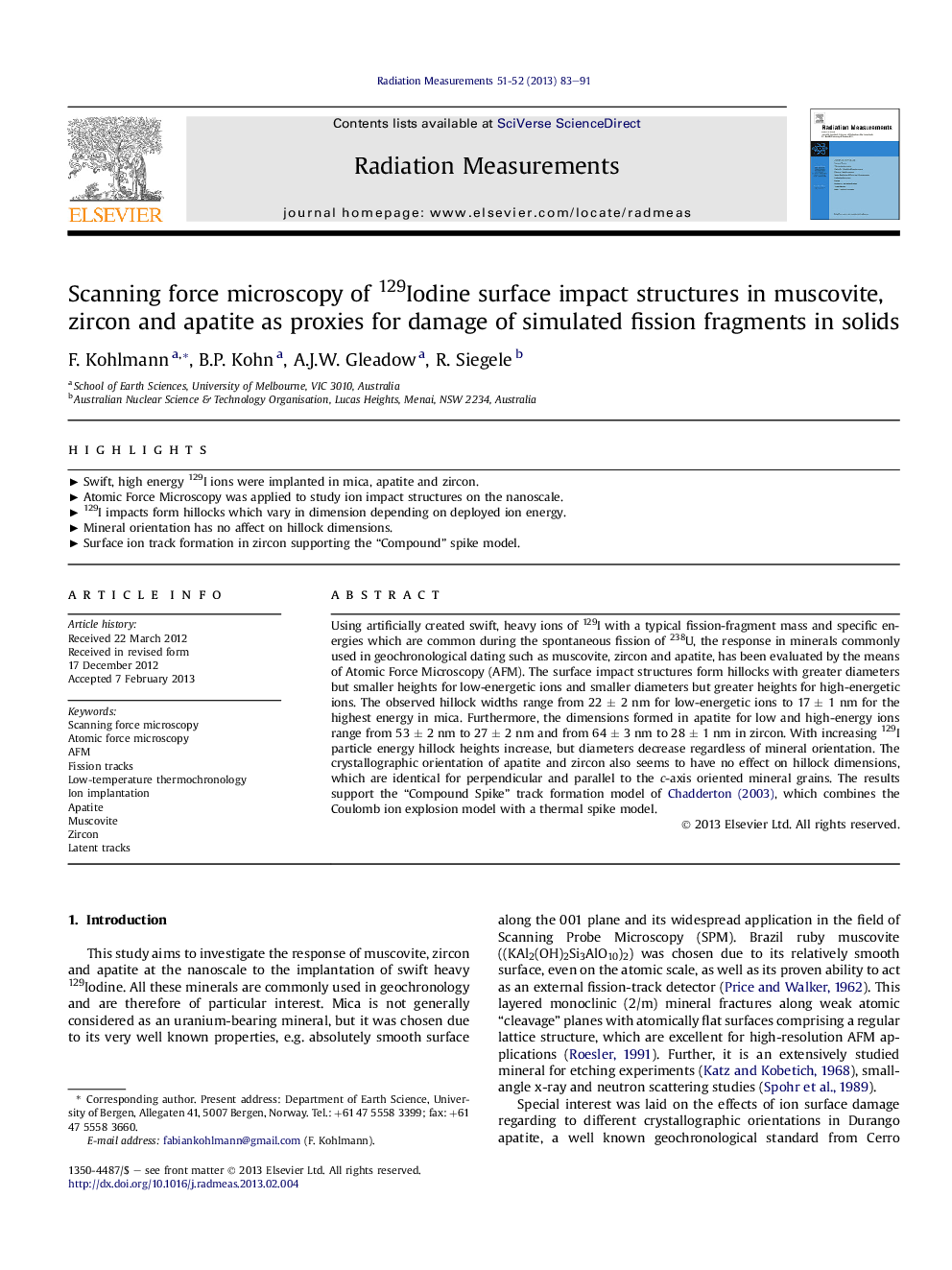| کد مقاله | کد نشریه | سال انتشار | مقاله انگلیسی | نسخه تمام متن |
|---|---|---|---|---|
| 1881451 | 1533437 | 2013 | 9 صفحه PDF | دانلود رایگان |

Using artificially created swift, heavy ions of 129I with a typical fission-fragment mass and specific energies which are common during the spontaneous fission of 238U, the response in minerals commonly used in geochronological dating such as muscovite, zircon and apatite, has been evaluated by the means of Atomic Force Microscopy (AFM). The surface impact structures form hillocks with greater diameters but smaller heights for low-energetic ions and smaller diameters but greater heights for high-energetic ions. The observed hillock widths range from 22 ± 2 nm for low-energetic ions to 17 ± 1 nm for the highest energy in mica. Furthermore, the dimensions formed in apatite for low and high-energy ions range from 53 ± 2 nm to 27 ± 2 nm and from 64 ± 3 nm to 28 ± 1 nm in zircon. With increasing 129I particle energy hillock heights increase, but diameters decrease regardless of mineral orientation. The crystallographic orientation of apatite and zircon also seems to have no effect on hillock dimensions, which are identical for perpendicular and parallel to the c-axis oriented mineral grains. The results support the “Compound Spike” track formation model of Chadderton (2003), which combines the Coulomb ion explosion model with a thermal spike model.
► Swift, high energy 129I ions were implanted in mica, apatite and zircon.
► Atomic Force Microscopy was applied to study ion impact structures on the nanoscale.
► 129I impacts form hillocks which vary in dimension depending on deployed ion energy.
► Mineral orientation has no affect on hillock dimensions.
► Surface ion track formation in zircon supporting the “Compound” spike model.
Journal: Radiation Measurements - Volumes 51–52, April–May 2013, Pages 83–91